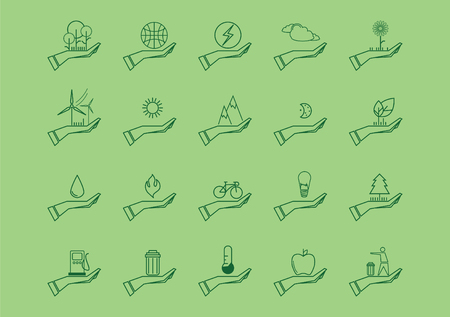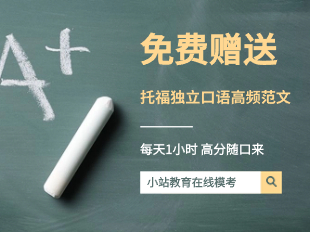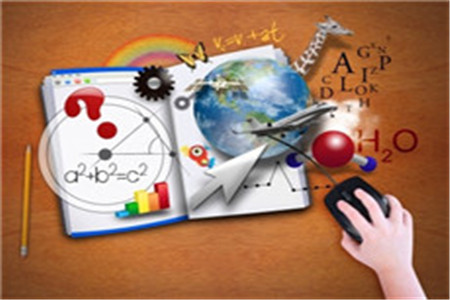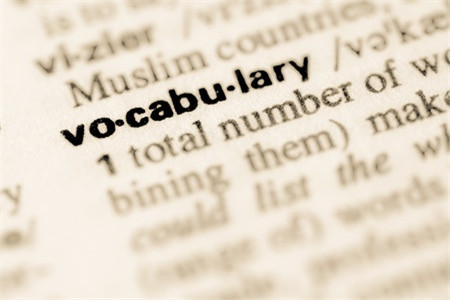【听力素材】托福巴朗听力原文——Philosophy Class
- 2016年02月01日13:27 来源:小站整理
- 参与(0) 阅读(5940)
在托福听力的备考中,选择一个适合自己的听力素材是非常重要的。而巴郎听力则是很多学生冲刺高分听力的必备选择。由于他的内容基本可以跟国外讲座水平接轨,所以是非常适合作为托福听力考前练习素材。那么在以下内容中我们就为大家带来巴朗听力原文,希望能为大家的备考带来帮助。
Professor:
$ Humanism is a philosophical position that places the dignity of the individual at the center of its movement.
$ A primary principle of humanism - I don’t need to spell that for you, do I? Okay, a primary principle of humanism is that human beings are rational and have an innate predisposition for good. Although humanism is associated with the beginning of the Reformation, the humanist philosophy was not new when it became popular in Italy during the Middle Ages. In fact, according to the ancient Greek philosopher, Protagoras, mankind was “the measure of all things.” And this idea was echoed by Sophocles when he said, “Many are the wonders of the world, and none so wonderful as mankind.” This is classical humanism. Man as the ideal at the center of all creation. Even the ancient Greek gods were viewed as resembling man both physically and psychologically. And, in a sense, isn’t this personification of the deity just another way to exalt human beings? But that aside, it was precisely the rediscovery and translation of classical manuscripts that coincided with the invention of printing presses around the mid-15th century, which, uh, . . . which provided a catalyst for the humanistic movement throughout Europe.
$ As the clergy and upper classes participated in the rediscovery and dissemination of classical literature, humanism became popular among theologians and scholars, and soon set the stage for the Renaissance.
$ This one, I’ll spell. Does anybody remember the meaning of the word renaissance?
$ Student 1: Rebirth, renewal.
$ Professor:
$ Right you are. Renaissance literally means “rebirth,” and it refers to the return to ancient Greek and Roman art and literature, which, like all things in the humanistic tradition, they were measured by human standards. Art returned to the classical principles of harmony and balance. In the field of architecture, we see both religious and secular buildings styled after ancient Roman designs, with mathematical proportions and . . . a human scale, a scale that contrasted with the Medieval Gothic buildings of the previous era. Public works such as bridges and aqueducts from the Roman occupation were repaired, restored, or rebuilt. In the sculptures of the period, nude figures were modeled in life-sized images, with true proportions, and it was also at this point that realism became the standard for painting, with a preference for naturalistic settings and the placement of figures in . . . realistic proportion to those settings.
$ It was also evident that the portraits tended to be more personal and authentic. And artists even produced self-portraits at this time. Remember, the figures in the paintings of the previous era tended to be of another world, but Renaissance painters placed recognizable human beings in this world. In music, there was an effort to create harmonies that were pleasing to the human ear and melodies that were compatible with the human voice. In addition, music lessons became more widespread as a source of education and enjoyment. Dancing increased in popularity with a concurrent trend toward music that had rhythm and invited movement as a pleasurable activity.
$ Student 2: Wasn’t that why Latin became so important?
$ Professor:
$ Yes. Both Greek and Latin became important as tools for scholarship, and classical Latin became the basis for an international language of the intellectuals throughout Europe. To be true to humanism, and all it represented, it was necessary to be knowledgeable about, and, uh, . . . and faithful to the ancient philosophies as expressed in their writing, and how best to express them than in the original languages?
$ By the way, Latin as a universal language for clerics and the aristocracy, this encouraged the exchange of ideas on a wider scale than ever before, and legitimized in a sense the presumption that mankind was at the center of all things. It also made it possible for individual scholars to make a name for themselves and establish their place in the history of mankind.
$ Well, it was at this time that a close association, almost a partnership was forged between art and science. In their efforts to be precise, sculptors and painters studied the human form. In effect, they became anatomists. You may recall the drawing in your textbook, the one by Leonardo da Vinci which demonstrates the geometrical proportions of the human body. And, of course, Alberti, in his many books on architecture, sculpture, and painting . . . he emphasized the study of mathematics as the underlying principle of all the arts. Whereas artists had considered themselves craftsmen in the Middle Ages, the great Renaissance artists viewed themselves as intellectuals, philosophers, if you will, of humanism.
$ They were designing a world for human beings to live in and enjoy. One that was in proportion and in harmony with mankind. So, perhaps you can see why the so-called Renaissance man emerged.
$ Student 1: Okay. But exactly what is the definition of a Renaissance man? I know it means a very talented person, but . . .
$ Professor:
$ Good question. Sometimes we use these terms without really defining them. So I would say that a Renaissance man would be talented, as you said, but would also have to demonstrate broad interests . . . in both the arts and the sciences. The quality that was most admired in the Renaissance was the extraordinary, maybe even . . . universality of talents . . . in diverse fields of endeavor. After all, this quality proved that mankind was capable of reason and creation, that humanism was justified in placing man in the center of the world, as the measure of all things in it. With the humanistic philosophy as a justification, scholars would interpret the ancient classics and some of them would argue to a reasonable conclusion a very new and more secular society built on individual, human effort. It was not difficult for the Renaissance man to make the leap of logic from classical humanism to political humanism, which encouraged freedom of thought, and indeed even democracy, within both the church and the state. But that is a topic for another day.





































